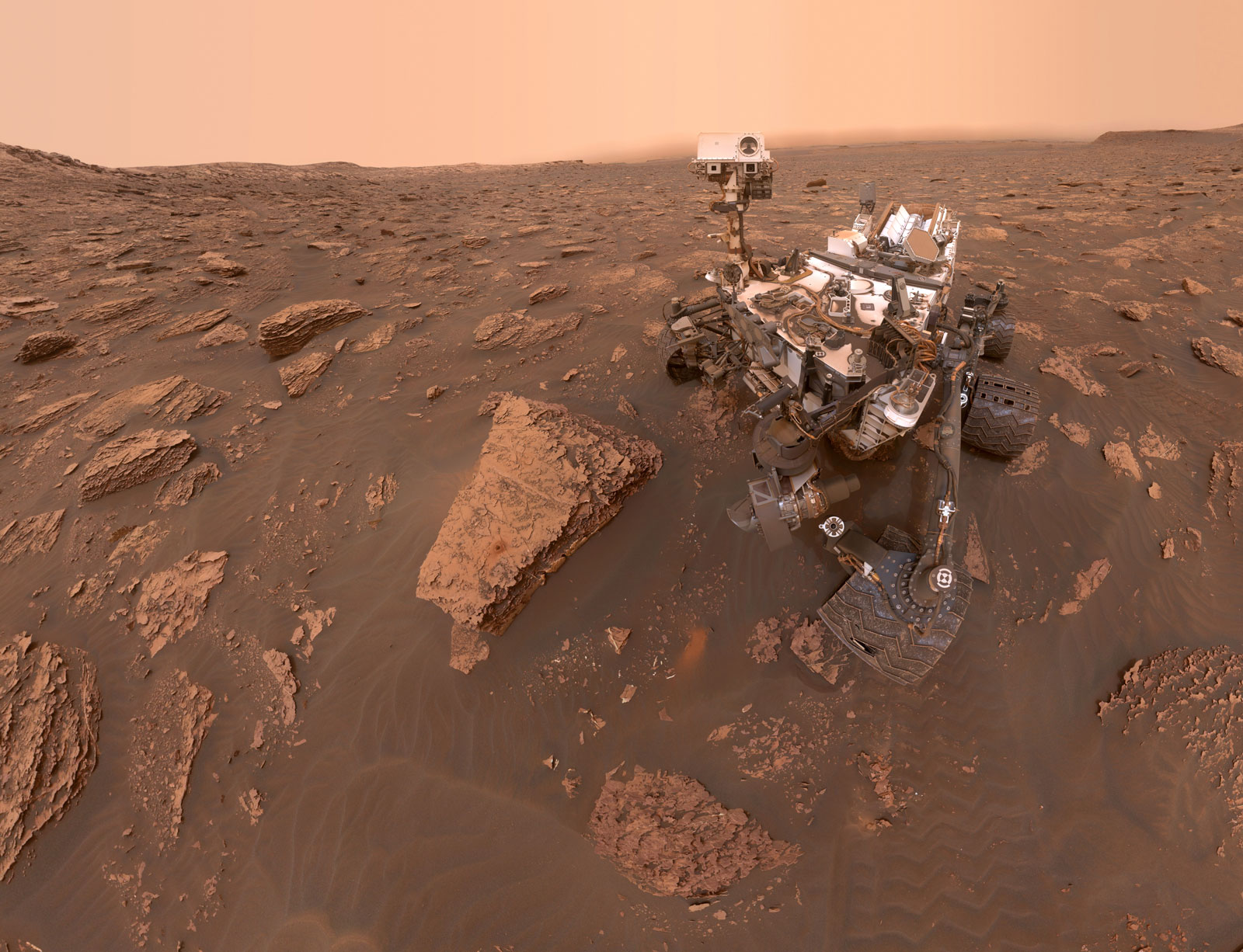Hacking a Mars rover’s tools has unearthed new insights into the planet

The Curiosity rover landed on Mars in 2012. Since then it has discovered things like organic carbon in Martian rocks and methane in the atmosphere, always using the same tools for measurements. When you are on another planet, it’s hard to refresh your tool set.
But a way of hacking the rover’s existing tools to get some new types of data has allowed it to make fresh discoveries about its home. As reported in Science today, the clever repurposing of one of its sensors has helped unearth new clues as to how the planet’s Gale crater and Mount Sharp formed.
The formation of the crater and the nearby mountain have been the subject of heated debate. That’s because the top of the mountain is taller than the rim of the crater, prompting some to think the features were created through erosion. Curiosity has been exploring this area since it touched down on the planet.
To find out, researchers needed to study the area’s rocks. Curiosity’s rover inertial measurement units (RIMUs), which are typically used to measure acceleration during navigation, were instead used to measure the force of gravity being exerted in a specific location while the rover was in one place.
Picking up slight variations in the gravitational field around the crater allowed the researchers to uncover the region’s density. “The lower levels of Mount Sharp are surprisingly porous,” said team leader Kevin Lewis of Johns Hopkins University. “We know the bottom layers of the mountain were buried over time. That compacts them, making them denser. But this finding suggests they weren’t buried by as much material as we thought.”
This points to the theory that the mountain hasn’t eroded much over time.
“There are still many questions about how Mount Sharp developed, but this paper adds an important piece to the puzzle,” says Ashwin Vasavada, Curiosity’s project scientist at NASA’s Jet Propulsion Laboratory. “I’m thrilled that creative scientists and engineers are still finding innovative ways to make new scientific discoveries with the rover.”
Want to keep up with the latest space news and technologies? Sign up for our newest newsletter, The Airlock
Deep Dive
Space
How to safely watch and photograph the total solar eclipse
The solar eclipse this Monday, April 8, will be visible to millions. Here’s how to make the most of your experience.
How scientists are using quantum squeezing to push the limits of their sensors
Fuzziness may rule the quantum realm, but it can be manipulated to our advantage.
The great commercial takeover of low Earth orbit
Axiom Space and other companies are betting they can build private structures to replace the International Space Station.
Stay connected
Get the latest updates from
MIT Technology Review
Discover special offers, top stories, upcoming events, and more.